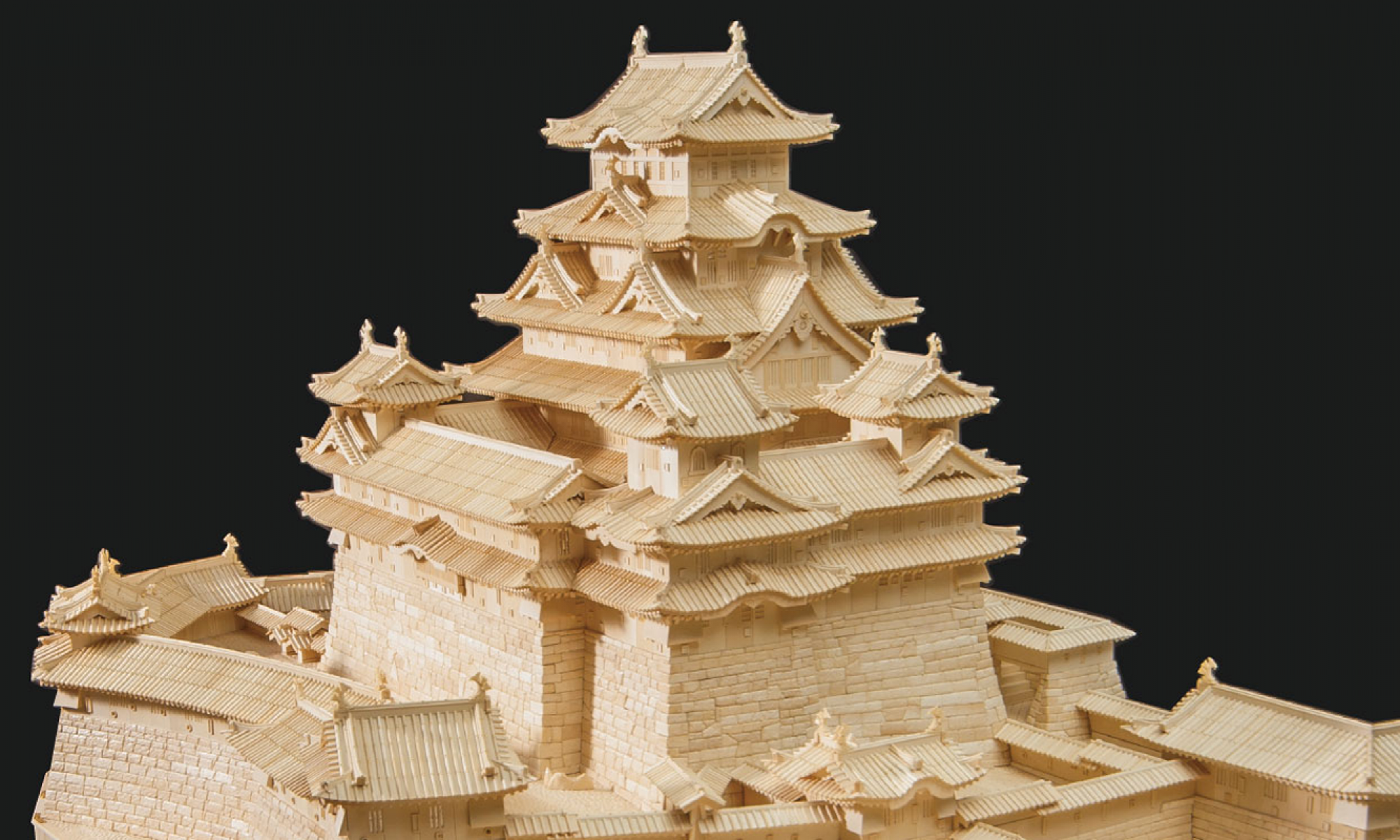About Ivory Sculpture
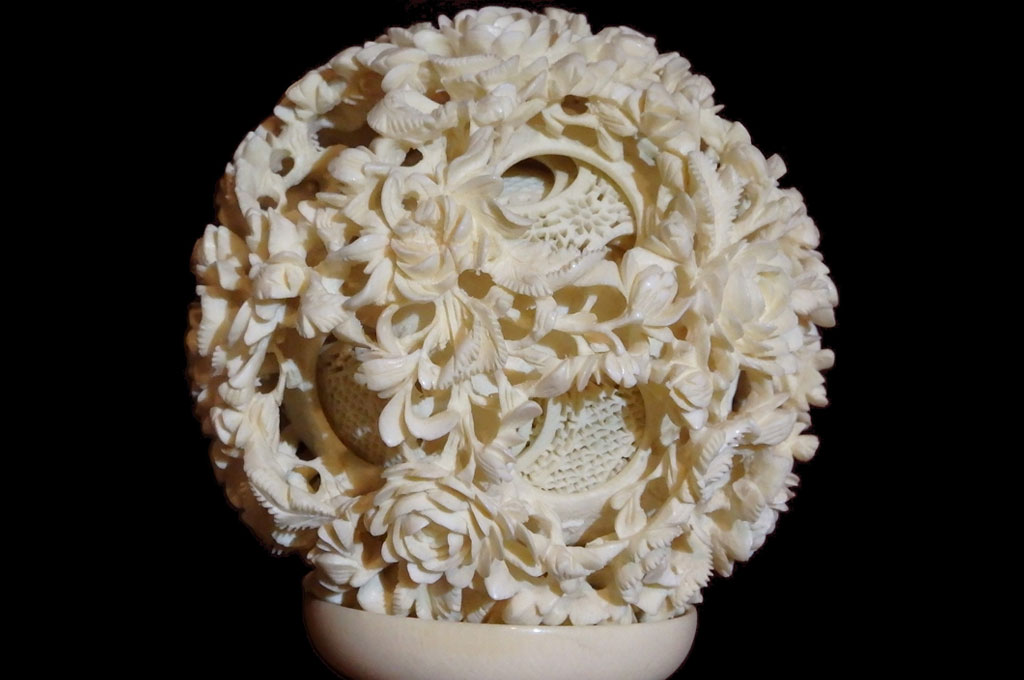
Characteristics of Ivory Sculpture
The unique beauty of the warm color, soft touch, grandiosity of the ivory material, and the intricate details created by the sculptor are all special characteristics of ivory sculptures. The ivory used has a particular solidity, hardness, and viscosity.
Ivory has a perfect amount of absorbency which creates a comfortable feel to the hands with the material being not too hard yet not too soft (2.5 on Mohs’ scale of hardness), and has a better workability than other materials such as metal, crystal, marble, and jade.
From Wikipedia
What types of crafts exist?
Ivory is loved by many from large artistic works of people, animals, buildings, to smaller items such as accessories, hooks, ornaments, seals, blades, parts of musical instruments (including plectrum, picks, and bridge of the Japanese Shamisen, white keyboard of pianos, etc.) among many other items.
History of Ivory Sculptures
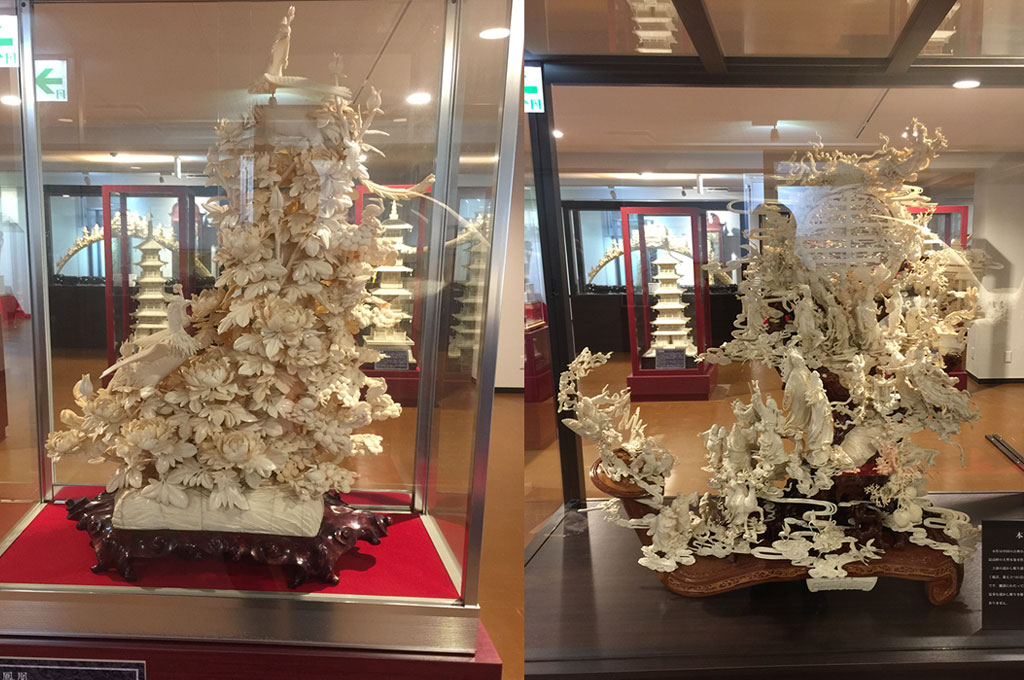
The World
The long history of ivory sculptures date back to 32,000 years ago where an ivory sculpture of a lion head statuette was discovered in Germany.
Ivory sculpture in China grew rapidly as the skills of the court craftsmen who used ivory to decorate the imperial household were established. Here at this museum,「Ivory Sculpture of Lion’s Head」 created during the Qing dynasty and 「Ivory Sculpture of Ferghana Horse」 created by Chinese court craftsman are exhibited.
Click here for introduction of the 4th Floor.
In relics of the Old Stone Ages of Europe, human and animal images were carved into the fangs of mammoth to create atlatl-like tools. In the 5th Century BC, an ivory sculpture of Goddess Athena carved by Phidias, a sculptor from ancient Greece was placed in the Parthenon Temple. In Islamic countries, larger ivory sculptures were made more easily than in Europe due to its accessibility to India and Africa and its compatibility of carving complex patterns of Islamic art.
From Wikipedia

Japan
Ivory was prized as much as coral and tortoiseshell from the anciet days. The techniques were brought into Japan from China in the Nara Era and ivory sculpture pieces brought from China are store in the Shosoin Treasure House.
Furthermore, in the Edo Era, daily usage items and ornaments made from ivory were established through the rising popularity of ivory hooks.
Colorful artworks were made with the introduction of coloring technique in the Taisho Era, which can be seen in works by Godo Kikuchi and Rokuzan Ando.
The techniques of ivory sculptures in Japan have been long passed down and has grown to become a traditional culture acknowledged worldwide.
Ivory Sculptures of Agape Ohtsuru Museum(AOM)
Based on the above information, it can be seen that ivory sculpture has a long culture and history from the ancient times and have been loved by many over a long span of time.
Agape Ohtsuru Museum(AOM) exhibits a wide genre of pieces including animals, Buddhist temples, the Virgin Mary, Danjiri Festival of Kansai, the Chinese 「Nine-Dragon Wall」, a non-material cultural heritage of China 「The Partition」, and Himeji Castle, a world cultural heritage, among many others.
You will be able to experience the beauty, history, and culture of ivory sculptures in many themes through a bigger scale than you’ve ever experienced before.
Please come for a mystical and beautiful experience.
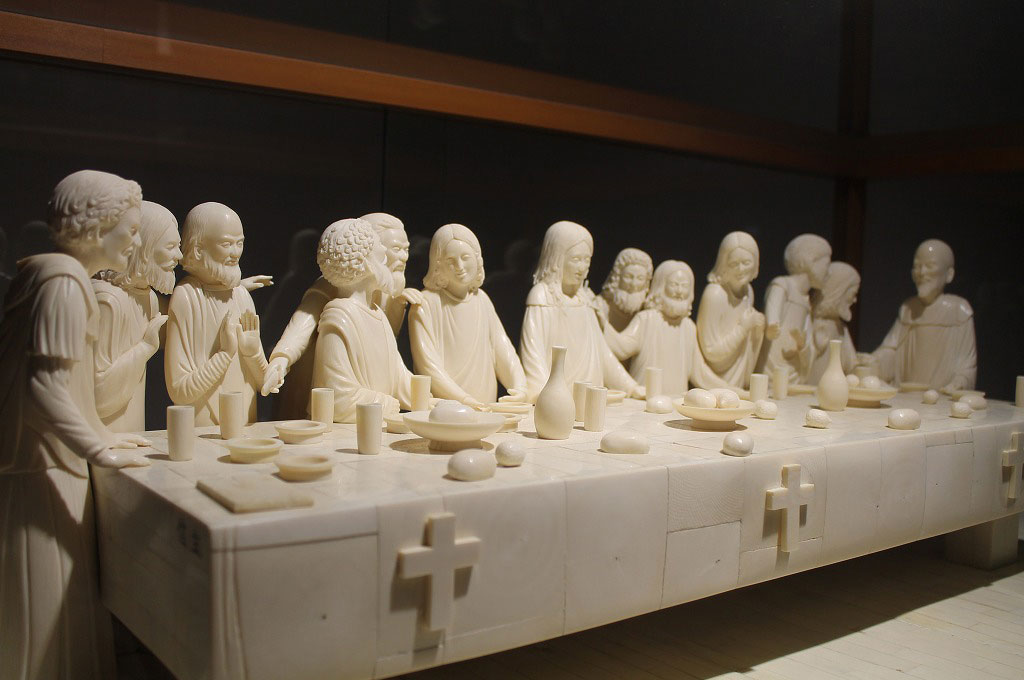
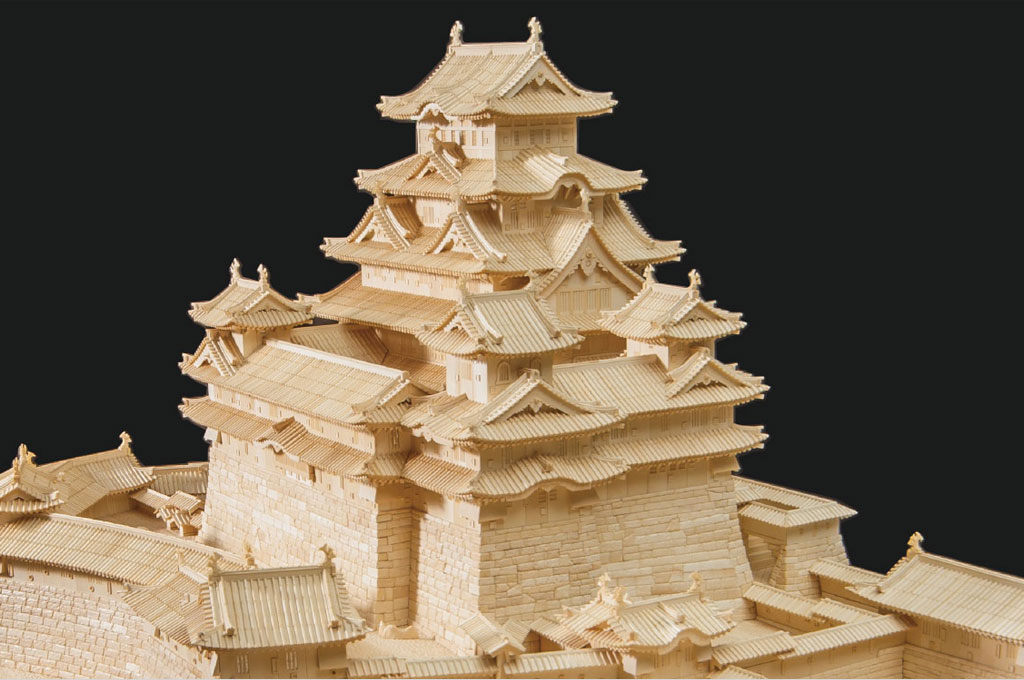
Agape Ohtsuru Museum(AOM) Main Sculptors
Hogetsu Ishiwatari
Japanese ivory sculptor. 「Largest in world Ivory Sculpture Himeji Castle」 (left photo・displayed on the 1st floor) created by Hogetsu Ishiwatari is a 1/50 (L250cm/W150cm/H190/155KG) recreation of the original, and is Japan’s first ivory recreation of Himeji Castle.
Shinsho Shimizu
Japanese ivory sculptor. The Pieta piece created by Shinsho Shimizu was three-dimensionally carved using high level of technique and only the most exquisite ivory.
